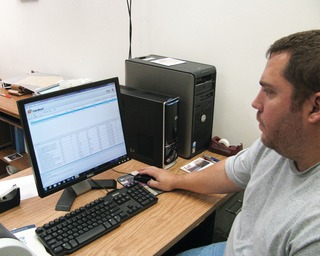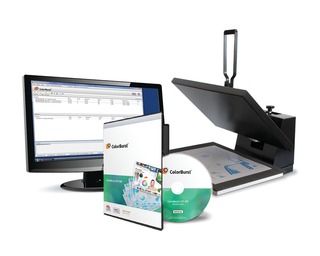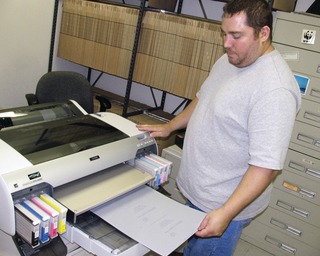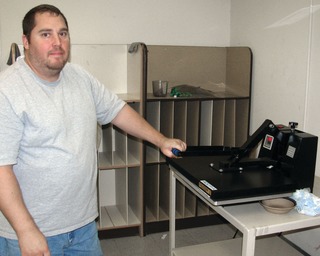Chantilly Printing & Graphics Makes the Leap to Inkjet Computer-to-Plate

"When I first started in this business, it took half a million dollars of equipment to separate to film to print color," said Jim Swiatocha, President of Chantilly Printing & Graphics (CP&G), a commercial printer located in Herndon, VA. Over the years, Swiatocha's shop has evolved with the changes in the printing industry, including the shift to digital. CP&G recently replaced two four-up offset presses with a new digital press. This left them with a two-up two-color press as well as the chemical-free laser platesetter that had made plates for all three presses.
Swiatocha couldn't justify the expense of keeping the laser platesetter, due to high monthly maintenance fees. He needed to find a better way to make plates. He had tried an inkjet computer-to-plate (CTP) system years ago, but the technology at the time didn't work for him. This time he found a new and much less expensive chemical-free digital inkjet CTP solution on the market. "I almost bought that system, but I got a set of plates and they weren't good enough—the screening was mottled," said Swiatocha. "I thought I might have to go with a used polyester system instead."
Then Swiatocha heard about a local company, ColorBurst Systems in Ashburn, VA, and their ColorBurst Digital Inkjet CTP System. He scheduled a demo with Larry Spevak, president of ColorBurst Systems, and was impressed not only with the plate quality, but with the level of service. "We're dedicated to providing a simple, elegant solution," said Spevak. "I helped Jim configure the ColorBurst CTP system to accommodate his workflow, and now he's up and running."
To make a plate, Swiatocha prints files from Adobe applications on a Mac to the ColorBurst CTP RIP running on a networked Windows computer. The file appears in the ColorBurst Job Queue, where Paul Scharer, CP&G's Production Manager, processes the file to build separated plate images. After placing a metal plate in an Epson Stylus Pro 4880, Scharer selects a ColorBurst print environment for 150 LPI and prints the job. Each plate is printed in standard cyan Epson UltraChrome ink on the metal plate. The plate is then heat-cured in the ColorBurst Plate Press or six minutes at 285 degrees. Once the plate has cooled, it's ready to punch and load in the press.
The ColorBurst Digital Inkjet CTP System provides the print quality CP&G needs at only $5,995 for the ColorBurst RIP, the ColorBurst Plate Press, and a printer plate guide. They estimate that the ColorBurst CTP system saves them at least $950 per month compared to their laser platesetter, based on maintenance fees and plate costs. With these savings, the ColorBurst CTP system pays for itself in less than a year. "A system that pays for itself in two to three years is good, but less than a year is a no brainer," said Swiatocha.
Today, CP&G uses the ColorBurst CTP system to make plates for all of their offset work, which makes up half of their print revenue. "One of the things I'm so delighted about is how good the screens look," Swiatocha said. "Even if I had the laser platesetter, I'd still use the ColorBurst CTP system, because it's a lot easier—ColorBurst just works."




